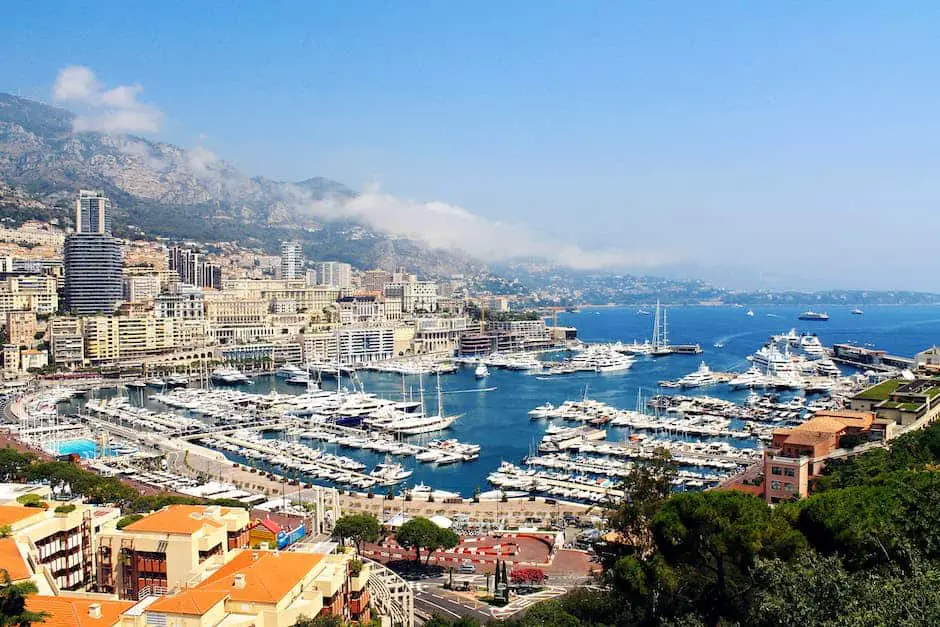
Imagine strolling through the sun-drenched streets of Monaco, where the Mediterranean breeze carries the scent of the sea and the whispers of history. This tiny principality, a gem on the French Riviera, is not just a playground for the rich and famous; it’s a living museum of architectural evolution. Monaco’s architecture is a fascinating tapestry, woven with threads of varying eras, styles, and visions that tell the story of its transformation from a humble coastal settlement to the epitome of luxury and sophistication.
The Foundations of Monaco’s Architectural Identity
Monaco’s architectural journey began with its strategic position as a coastal fortress. The iconic Prince’s Palace, perched atop the Rock of Monaco, is a testament to its medieval roots. Originally built in 1191 as a Genoese fortress, the palace has undergone numerous renovations, each layer adding to its storied past. The fortress evolved into a lavish residence, reflecting the power and prestige of the Grimaldi family who have ruled Monaco since the 13th century.
Surrounding the palace, the Old Town of Monaco-Ville still retains its medieval character with narrow, winding streets. The ancient walls and fortifications whisper tales of bygone sieges and political intrigue. It’s a stark contrast to the glitz of modern Monaco, yet it remains an integral part of the principality’s charm.
The Belle Époque and the Rise of Opulence
Fast forward to the late 19th and early 20th centuries, and you’ll find Monaco at the height of the Belle Époque. This era of peace and prosperity saw a boom in construction, with architects drawing inspiration from a variety of styles, including Art Nouveau and Beaux-Arts. The result? A blossoming of ornate, elegant buildings that catered to the European elite flocking to Monaco for its climate and burgeoning Casino scene.
The Monte Carlo Casino, designed by Charles Garnier, is a shining example of this period. Opened in 1863, its opulent design and lavish interiors set the standard for Monaco’s architectural ambitions. The casino became a cultural hub, attracting artists, aristocrats, and adventurers alike. The surrounding district, Monte Carlo, sprang up in its Wake, with grand hotels and villas that echoed the casino’s luxury.
Modernism and the Contemporary Skyline
As the 20th century progressed, Monaco embraced modernism without abandoning its luxurious roots. Architects began experimenting with new materials and forms, leading to a skyline that reflects both innovation and tradition. The 1970s saw the rise of the Monte Carlo Sporting Club and the Grimaldi Forum, both of which showcase modernist design while maintaining a distinctly Monegasque flair.
Today, the principality is a blend of the old and the new. Sleek glass and steel structures stand alongside Belle Époque mansions. The Odeon Tower, a double-skyscraper completed in 2015, epitomizes this mix. It’s one of the tallest buildings on Europe’s Mediterranean coast and represents the pinnacle of luxury living, with a penthouse that’s among the most expensive in the world.
Preservation and Innovation: Monaco’s Architectural Future
Monaco’s leaders understand the importance of preserving the principality’s architectural heritage while also embracing the future. Recent developments have focused on sustainable design and green spaces, ensuring that Monaco’s growth remains in harmony with the environment. The ambitious offshore urban extension project, Portier Cove, aims to add new land to Monaco’s territory using environmentally friendly methods and will include parks, luxury apartments, and more.
This delicate balance between the old and the new is what makes Monaco’s architecture so unique. It’s not just about creating buildings; it’s about crafting a narrative that respects the past while looking forward to the future.
FAQs About Monaco’s Architecture
- What architectural styles can be found in Monaco?
In Monaco, you’ll find a rich blend of styles, from medieval fortifications and Renaissance influences to Belle Époque opulence and cutting-edge modernism. The principality’s architecture is a reflection of its history and its status as a luxury destination.
- Can visitors tour historic buildings in Monaco?
Absolutely! Many of Monaco’s historic buildings, including the Prince’s Palace and the Monte Carlo Casino, are open to the public. Walking tours are a great way to explore Monaco’s architectural heritage.
- How is Monaco accommodating its growth without compromising its architectural integrity?
Monaco is known for its innovative urban planning. Projects like Portier Cove are designed to expand the principality’s territory while prioritizing sustainability and architectural harmony.
Conclusion
Monaco’s architecture is more than just a backdrop for the high life; it’s a narrative of resilience, opulence, and innovation. From the fortified origins of the Prince’s Palace to the modernist lines of the Odeon Tower, Monaco has managed to preserve its architectural heritage while seamlessly integrating contemporary design. This blend of history and modernity is what makes Monaco’s skyline uniquely captivating.
As you wander through the streets of this coastal jewel, you’re not just walking through a city; you’re experiencing a living timeline that showcases the evolution of European architecture. Monaco may be small, but its architectural legacy is mighty, standing as a testament to the principality’s enduring allure and its commitment to a future as bright as its past.
For those seeking to understand the essence of Monaco’s architecture, it’s clear that this tiny principality offers a masterclass in blending tradition with progress. It’s a place where every building tells a story, and each new structure is a chapter yet to be written. So, whether you’re an architecture buff, a history enthusiast, or simply someone who appreciates beauty, Monaco’s architectural journey from past to present is sure to leave you in awe.